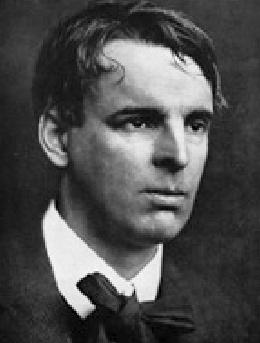On March 22, 1920, Irish poet and playwright William Butler Yeats (1865-1939) gives a lecture at Tacoma’s First Congregational Church under the auspices of the Tacoma Dramatic League. The event is part of a lecture tour the poet is making throughout the United States. Yeats gave a similar lecture in Seattle four days earlier, on March 18th.
Ireland’s "Man of the Hour"
William Butler Yeats was born in 1865 in Sligo, Ireland, but spent his early years in London -- his father, originally a lawyer, moved there to pursue a second career as a painter. The Yeats family later returned to their native country in 1880, settling in Dublin where William attended school and associated with the various artists and writers amongst his father’s circle of friends. Yeats was first published in 1885, with his early writing drawing on Irish mythology and folklore for inspiration. Over time, he gradually became associated with a group of young, emerging Irish writers, later to be dubbed the Irish Literary (or Celtic) Revival.
In the late 1890s, Yeats turned his attention toward the stage, and in 1904 helped form the Irish National Theatre Society, which began presenting plays at the Abbey Theatre in Dublin. (Yeats’s play Cathleen Ni Houlihan was a feature presentation on opening night.) A keystone of the Abbey was bridging class boundaries amongst its performers, with people from all walks of life working together to produce its plays. The effort was a tremendous success, and Yeats would continue to be associated with the Abbey Theatre for the remainder of his life.
Yeats would gradually move away from the traditional folklore that inspired his early work and begin to depict more personal and political subjects in his writings. This change only increased his stature, both as an artist and -- eventually -- as a spokesman for the Irish people. Yeats would even delve into politics in the 1920s, serving in the Irish Senate (the Seanad Éireann) between 1922 and 1928. But he continued writing throughout this period, earning a Nobel Prize for literature in 1923 and continuing work on various projects up to his death in 1939.
The Artist as Art
On the night of March 22, 1920, a crowd of 400-plus attended William Butler Yeats’s lecture at Tacoma’s First Congregational Church, which was preceded by a violin ensemble led by a Mrs. Dunkleberger. Although Yeats shared some of his own poetry in addition to providing details on the life of fellow Irish writer John M. Synge (1871-1909), he spent most of the evening describing the People’s Theatre movement and the triumphs achieved at the Abbey Theatre in Dublin. (In advance of the engagement, the Tacoma Daily Ledger -- perhaps playing on Yeats’s known interest in mysticism and the occult -- promised that the writer would also report on his various experiences hypnotizing dogs and cows. It does not appear that this subject took up much, if any, of the poet’s discussion.)
Addressing the crowd in a relaxed manner, Yeats noted that the Abbey Theatre’s success lay in producing plays “of the people, by the people, and for the people” (“Urges Founding of People’s Theatres”). More so than his subject matter, however, it was Yeats himself that left the biggest impression on Tacoma audiences. “The poet’s own personality was the dominant element in the lecture last night,” observed the Daily Ledger. “He is an artist in feature, in dress and in gesture. Following his lecture, which he delivered with an easy charm, lounging about the platform meanwhile, he read three whimsical little poems that delighted” (“Yeats’ Muse Shuns Educated People”).

